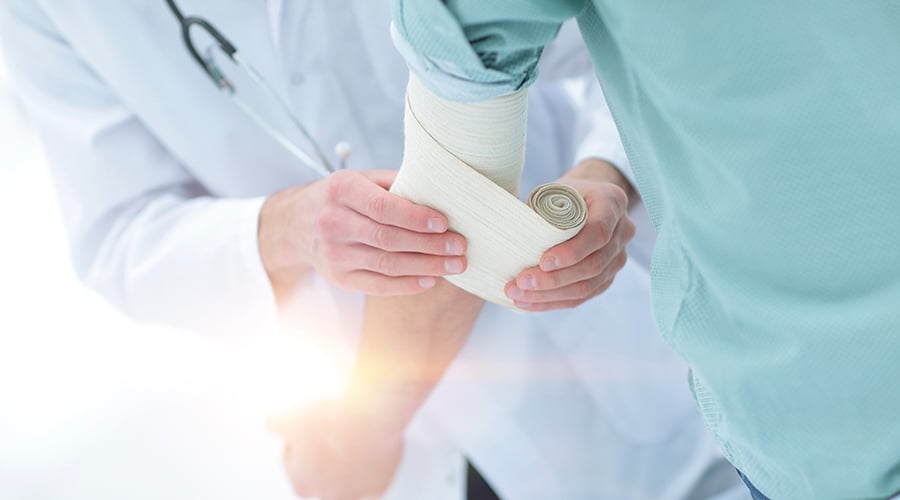For decades, avascular necrosis (AVN) of the femoral head was regarded as a degenerative...
Skin Flap Surgery, Explained

Skin flap surgery involves the partial detachment and repositioning of healthy tissue as a means of covering a nearby wound. The flap itself may contain skin and fatty tissue, or skin, fat and muscle from the donor site; however, it is necessary that this tissue remains attached to the body by a major artery and vein, or at its base.
Typically used in reconstructive surgery and set into a recipient site, or injured area, skin flaps have become viable in cases ranging from facial reconstruction following cancer excision to recovery following tissue loss due to mastectomies and other traumatic medical events, such as amputations, ulcers, and burns.Types of Flaps
Skin flaps are most often categorized as either local or free, with the former rotated or moved from an adjacent area to cover a defect, and the latter detached and transplanted to the recipient site. While local skin flaps remain attached to the body at its base, utilizing blood vessels from the donor site, free skin flaps require these vessels to be surgically reconnected to veins and arteries near the wound.
Local flaps can be further broken down into several types: advancement, in which the flap moves directly forward with no lateral shifting; rotation, where the flap rotates around a pivot point to be positioned adjacently; transposition, in which the flap is required to move laterally in relation to a pivot point; and interpolation, where the flap, in the process of rotating around a pivot point to be positioned nearby, passes above or below a section of intact tissue, forming a sort of “skin bridge.”
Recovery Process
In general, donor sites are chosen based upon several factors, including how closely the skin matches the area of the wound, the potential visibility of the scar, and the proximity of the donor and recipient sites. It is important to note that, following surgery, a patient may experience a greater degree of pain at the donor site due to newly exposed nerve endings.
As with any surgical procedure, post-op care is crucial. Proper attention to the wound will facilitate healing, and in most instances, reduce scarring. In the event of an infection following skin flap surgery—or lack of robust blood flow to the area, leading to potential flap failure—hyperbaric oxygen therapy (HBOT) may prove to be helpful in maximizing the viability of compromised tissue. This can reduce the need for a repeat flap procedure.
For more information on skin flaps, and the use of HBOT to facilitate the healing of damaged tissue following such a surgical procedure, contact Hyperbaric Medical Solutions today.

Written by Alan Katz, MD, FUHM, FACEP, FAAEM
Dr. Alan Katz, National Medical Director of Hyperbaric Medical Solutions (HMS), is double board certified in Emergency Medicine and Hyperbaric Medicine. He directs clinical operations, education and research initiatives, and the integration of other regenerative medicine therapies....
Read More


